Python For Kids: Ultimate Guide & Tutorial to Learn Python in 2025
Python For Kids: Ultimate Guide & Tutorial to Learn Python in 2025
Did you know tech giants like Google and Microsoft use Python daily? We live in an increasingly digitised world, and most kids today are consumers of technology. Software is a crucial part of our lives today, and there is always time to learn Python for kids and understand how it works. Different applications that we use on our computers daily rely on coding. All the entertainment your child consumes on Netflix also uses Python.
Let’s talk space. Did you know that NASA uses Python to solve complex problems? I know; it's pretty fascinating. Your child can also be a part of this ecosystem by exploring Python programming for kids. Kids learn Python by taking up Python coding for kids' programs, practising, reading books, doing independent projects, and much more. Starting with Python for kids ensures a simple and engaging introduction to one of the most widely used programming languages today.
So, keep reading!
What is Python?
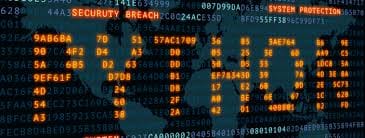
Python was first introduced in the year 1991 designed by Guido Van Rossum as a high-level programming language and was developed as a general-purpose programming language. It is a cross-platform programming language, which can be run on multiple platforms like Windows, Linux, macOS, and has even been ported to the Java and .NET virtual machines also. Python is easy to access because of its simple code readability which offers rapid development and increased productivity for large-scale projects.
What is Python used for?
Other programming languages have their uses and features. Still, Python for kids is an in-demand and popular high-level programming language choice for many developers. Python programming for kids is beneficial due to its simplicity and readability, making it accessible to young learners. But what is Python used for? It is used for multiple purposes and areas, and learning Python can help kids start building practical projects from an early age. As more educators recommend Python coding for kids, it's becoming an essential tool for understanding the basics of computer science.
AI and ML
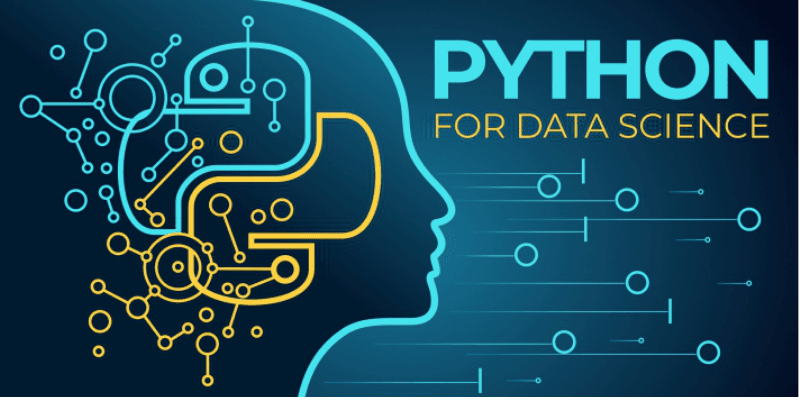
Python is a staple and stable programming language of choice when it comes to AI (Artificial Intelligence) and ML (Machine Learning) projects. Because of Python’s AI and ML-friendly library packages, it is very much liked by Data Scientists as well. Data Analytics and Data Visualization
Before that, let's talk about Data Science. Why? Because Data Analytics and Data Visualization are sub-parts of Data Science. Almost everyone has heard of Data Analytics because it is extremely popular. This rapidly growing field uses Python programming for beginners to conduct the analyses, which consist of a huge amount of data. Data visualisation is another related field that transforms data into meaningful insights. It also uses Python to create charts, graphs, and 3D plots.
Programming Applications
Create any kind of programming application using Python. Incorporating Python’s general-purpose programming, read and build file directories, APIs, and GUIs for your video, audio, or another technological application.
Web Development
Because of Python’s wide range of available frameworks, Django and Flask are some popular ones. The frameworks comprise extensive libraries and other functions such as content management, database access, etc. Learning Python programming is essential, as Python’s role is communicating with the database, ensuring security, and transferring data between servers.
Game Development
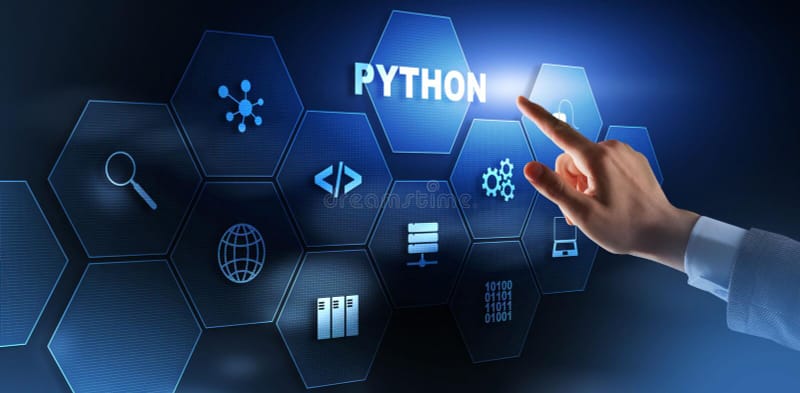
Although not as popular as C++ but still Python has proved to be of great use because of its rapid developmental design, it can quickly build prototypes. Learn more about it from our Complete Guide on Game Development for Kids.
Automation

Stop performing mundane tasks rather than automating them by using Python. Scripting is the term used for describing the writing of codes for building these automated processes. This is a beginner-friendly operation if you want to get started with Python.
Finance

Incorporating Python is proving to be a breakthrough in the finance industry. It helps in qualitative and quantitative analysis of predictions, trends, and asset values of the financial market. As Python is already used for compiling and processing huge data which is more the reason why it is such a reliable programming language in the finance world.
What is the Best Age to Learn Python?
Here’s the thing: there is no right or wrong age for learning; for that matter, it can be a programming language and painting as long as you begin and maintain consistency. Kids are imaginative, expressive, and perceptive. If appropriately utilised, these skills can yield excellent results, improving logical capabilities and interpersonal skills. Learning Python programming language from an early age has its own set of benefits. That is why even schools provide subjects like computer science early to build up the fundamentals. Coding is a part of computer science and has many other applications attached to it. That’s why encouraging your child to study computer science will have many benefits while taking the coding course. Python programming for kids is also known for its flexibility and rapid development. Therefore, kids of various ages can learn Python for kids effectively. The Python language content is easy to understand and highly intuitive. Python does not have a compilation step, meaning one less step to follow. Therefore, the best age to learn Python is as early as possible. Parents can enrol their children in
Python coding for kids beginner courses are available for elementary school students to high school students, ages 5 to 18. Learn more about our Python courses designed to make coding fun and engaging for kids.
Why Should Kids Learn Python?
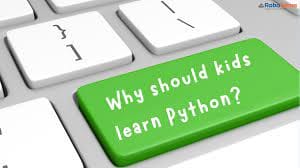
Python learning helps kids become sharper, more creative, and more intuitive. This encourages kids to build good logical habits as they grow and gives parents a peaceful state of mind despite the heavy screen time consumption. Python for kids is an excellent way to introduce coding early, making it easier for them to grasp complex concepts later. Additionally, learning Python programming for kids builds computational thinking and helps kids excel in different areas of life.
Here is how it can help the kids -.
Stimulates innovation
Learning python cultivates creativity in a child and helps strengthen their brains. The structure of python programming enables the child’s critical thinking, leading them to think differently, ultimately driving them to be innovative.
Inculcates logical thinking
To strengthen logical thinking, one must be exposed to an environment that invokes python skills. Learning Python teaches children how to communicate effectively and develop logical thinking skills. Using fundamental concepts lets the kids use their logical thinking skills during programming.
The demand for python is continually growing
According to Stack Overflow, Python is the fastest-growing programming language. In the next few years, python will surpass other coding languages in terms of active use. This ultimately means more opportunities and therefore the earlier you start the better. Because a higher expertise level means better possibilities for prospects. Therefore, kids python is very crucial with respect to the ever-growing demand for Python.
Boosts formalistic performance
Kids coding helps children to understand how to plan and organize thoughts better than non-coders. To write code one needs to learn coding to grasp the core concepts from the online python courses. It helps you boost formalistic performance by simply enabling the intuitive programming inside your brains that helps generate solutions accordingly.
Makes kids self-reliant problem-solvers
When kids learn to develop and structure their projects, they learn there is no one-size-fits-all solution. Even if their way doesn't work, they can improve upon what they have already done without worrying about failing. This allows them to be more confident about their abilities, which in turn makes them good coders.
Today, learning to code is more of a life skill similar to reading, writing, etc. It has turned out to be a must because of its popularity and functionality. Kids of today are the grownups of tomorrow that will shape our future and learning how to code python from a young age will help them shape their future and become wholesome problem solvers. Learning Python is an essential 21st-century skill for kids. Read more about 21st Century Skills For Kids.
What are the best ways to learn Python For Kids?

As we already know, Python programming for kids is the modified version that allows kids to understand and learn at their own pace. In school, computer science entails the basics of technology and its uses, which is the preliminary step to invoke interest in Python coding for kids. There are many ways to learn Python for kids, and children could respond to each one of them differently. However, here are some tried and tested methods to make the learning process fun and exciting:
Practice Basics
I know it’s the same old tip, but it is highly recommended. Why? Because it works and therefore mentors and experts have always suggested this basic Python approach because it works. Practicing will help you understand and expand your knowledge wider and deeper.
More Coding
Learning the structure and syntax is great. But are you coding if you don’t know how to use them? Learn to code than learn a little bit more. As quoted by Abraham Lincoln - “Give me six hours to chop down a tree and I will spend the first four sharpening the axe.”
Take Inspiration
Now, this can be extracted from anywhere. It could be your neighbor or Steve Jobs; honestly, that doesn’t matter. There should be some you look up to for a better understanding of the craft.
Participate In Coding Contests
Popular coding contests, such as hackathons, creation contests, and more, will expose you to how your peers and competitors use programming.
Join A Community
This step generates a sense of community of like-minded people and builds overall appreciation for the programming language.
How Can I Help My Kids Learn Python?
Learning Python is easier than you think. Below is a beginner-friendly Python tutorial you can easily assist your kids with. You can easily teach Python to your kids by following the Python tutorials. Therefore, we provide these Python tutorials for kids with easy-to-follow instructions and explanations to help you guide your kid at their learning pace.
After completing the simple python tutorial your kids will develop proficiency in the Python framework and eventually about creating and building fun games and projects.
Keywords and Variables
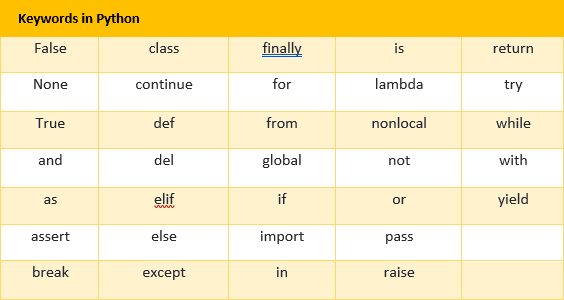
The reserved words having a special meaning which will perform some specialized task is called a keyword. We cannot use a keyword as a variable name, function name, or any other identifier. They are used to define the syntax and structure of the Python language. In Python, we also get case-sensitive features with the keywords and variables. Some examples of keywords: False, True, else, break, None, except, finally, etc
Data types
Every value in Python has a datatype. Since everything is an object in Python programming, data types are classes and variables are instances (object) of these classes. Listed below are some of the most important data types in Python. Int, Float, Complex, List, Tuple, Strings, Set, and Dictionary
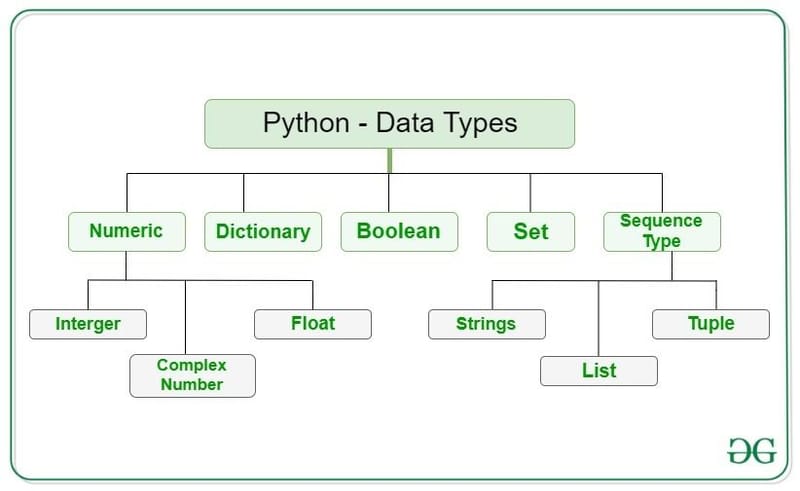
Operators
Some special symbols are called Operators in Python for carrying out arithmetic or logical computations.
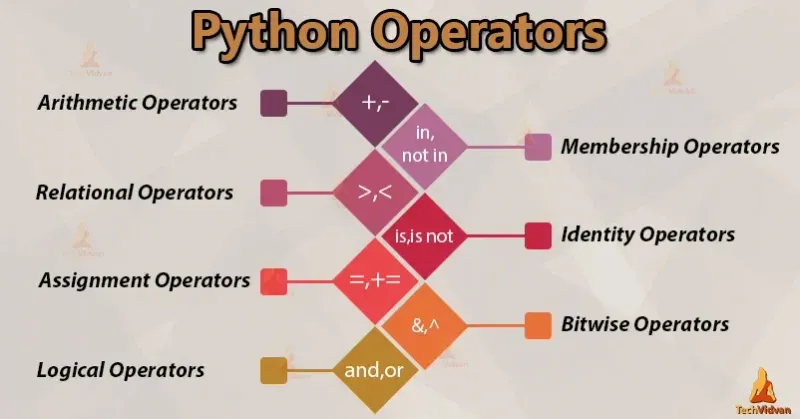
Arithmetic Operators:
Operator
Example
- 5+3 = 8(addition)
- 6-2 = 4(subtraction) / 8/4 = 2(division)
- 3*2 = 6(multiplication) % 5%2 = 1(gives the remainder of 5/2) // 6//5 = 1(Floor division - division that results in the whole number adjusted to the left in the number line) ** 3**2 = 9(3 to the power 2)
Like the Arithmetic Operators, we have some other operators with some specialized functions. Some of the most important ones are mentioned below.
Comparison Operators, Logical Operators, Bitwise Operators, Assignment Operators, Identity Operators, and Membership Operators.
The Python shell can perform the above arithmetic operations because it is an interpreter where you can execute your Python code and commands. The Python shell has many other features, including adding a shell page.
Functions
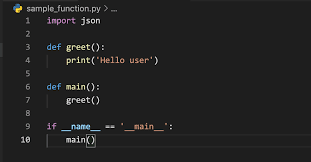
A function is a set of related statements which perform a particular task. This helps us to break our program into small modules which helps a coder to handle the codes when the code size is very large.
Loops
Loops are nothing but as the name itself suggests, it is a set of instructions that are repeated until a certain condition is reached. In this structure, there is a question which on being asked an action is executed for generating the answer and keeps on repeating the question till you no longer need to act.
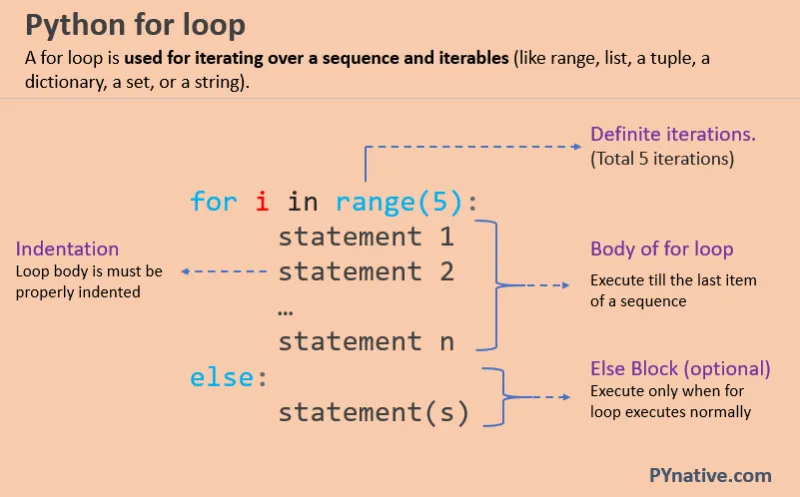
The different types of loops are as follows:
While Loop: tests the condition before execution of the body of the loop
For Loop: abbreviates the code of the managing loop variable and executes a sequence of statements multiple times
Nested Loops: these are used within other loops
Object-Oriented Programming in Python
Different types of languages are multi-paradigm and Python is one among them. It supports different programming approaches. One of the popular approaches to solve a programming problem is by creating objects. This is known as OOP(Object-Oriented Programming). This is a method of structuring a program by assembling related features and behaviors into individual objects.
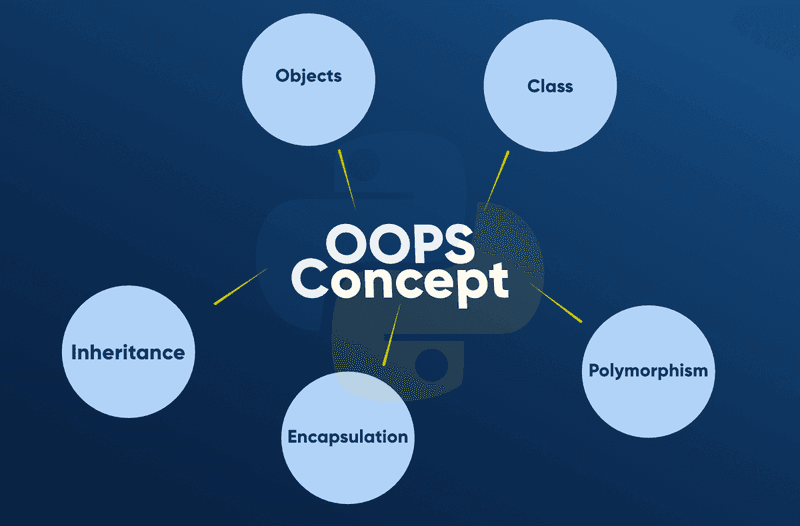
Object
A unique instance of a data structure that is defined by its class. An object comprises both data members and methods. A method is a function that belongs to an object. Semantically, objects are like components of systems. For example, list objects have methods called append, insert, remove, sort, and so on.
Class
A class is a code template for creating objects or can also be called a blueprint for the object. In python, the class is created by the keyword ‘class’ and attributes are the variables that belong to a class. The class creates a user-defined data structure that consists of user-defined data members and member functions which can be accessed by using an instance(object) of that class. Along with the above-mentioned topics, there are many more advanced topics in python like Iterator, Generator, Closure, Decorators, Property, RegEx, etc.
Best Online Python Classes for Kids
You can easily find tons of online courses and classes on Python programming for kids and other programming languages. There are Python coding for kids courses with fun examples and kids' tutorials for professional coders. Now that you know all the basics—how’s and what’s—it’s time to choose the best online classes for your kids. The list below contains all the websites offering Python programming for kids, including Python classes, tutorials, modules, and projects. A tip would be to review them and then make an informed decision.
- Codecademy
- Codeyoung
- Khan Academy
- Python.org
- Coursera
- Udemy
Utilize Gamification- Best Python Games for Kids
But before we jump into learning some games let us familiarize ourselves with python frameworks used for developing games.
Pygame
PyOpenGL
Panda 3D
Pyglet
PyKyra
Python-Ogre
Ren’Py
Pivy
Cosco 2d
These python frameworks are used for creating various games with multiple difficulty levels. Pygame is one of the most popular and well-known python frameworks.
Kids love games. That’s why when you gamify something it becomes 2x more fun to learn. With kids sometimes attention span can be in between their creativity and critical thinking. So, here's a list of fun examples for learning python coding for kids.
Connecting Dots: The uber-popular connect the dots game that can be played The popular connect the dots game that can be played with multiplayer. Simple rules- players in turn connect the dots by drawing lines between them forming a box and that player gets to go again. After that, the highest score out of 81 boxes wins the game.
Paint: When we hear paint, we immediately think of Microsoft paint. But we can do the same thing using Python as well. First, create a window on which we will be drawing. Second, we define the colors of the pencil, you can go for multicolor as well by defining color to each pencil. Last but not least, is the code for drawing on moving the mouse across the window.
Tic Tac Toe: The rules of this game are pretty simple, can be with two players at a time. A board of 3x3 square grid is formed. Then players put 'X' and 'O' on the square grid alternatively. A player wins the game when they draw 3 successive 'X' or 'O' either diagonally, vertically, or horizontally. If the above doesn't work then all the grids are filled and the game draws.
Snake Game: If you had fun playing the Snake game then now it's the building one. The steps in creating the snake game are as follows- creating the screen, creating the snake, adding food, increase in the length of the snake as it keeps eating and moving, game over message when the snake hits the boundaries, and lastly displaying the score.
Ping Pong: A well-known arcade game played worldwide. Now you can create your own ping pong game by going through the simple set of steps.
- Start with creating the two paddles, one for the left and the other for the right sides of the screen
- Then create the ball. After that make an event that activates by pressing a certain key and helps move the paddle vertically
- And lastly, create the function for updating the score of the players after every missed collision
Other popular mentions include the Stick Man Races in which we write code to create the stick figure and actions carried out by the figure.
Start Reading - Best Python Books For Kids
Reading is a habit one must teach, no matter what. Here's a list of Python books for kids to learn more and develop a comprehensive knowledge of Python. A fun fact: The well-known publisher No Starch Press has introduced many crash courses on Python for kids. This publishing house is responsible for producing the most popular book, Python for Kids, authored by Jason Briggs.
- Python For Kids by Jason Briggs
- Coding Projects in Python By DK
- Python in Easy Steps by Mike McGrath
- Hello World! Computer Programming for Kids and Other Beginners by Warren and Carter Sande
Take On A Project- Best Python Project for Kids
Projects help shape your learning and further expand your knowledge. This python for beginners projects will sharpen your grasp of the python programming language.
Try drawing patterns and designs. Challenge your kids by creating more complex shapes. You can also use loops and other functions to create more complicated shapes.
Create a stick figure animation. To make it more challenging, you can let kids build a stick figure of someone they know in real life.
Develop a simple chatbot. Making a simple chatbot that holds a simple conversation. For a more challenging option, one can use the random module to make it less predictable.
Make a quiz game. Once again, using the various functions and loops, you create a simple quiz game in which users can input answers in multiple-choice or typing format.
Form your own adventure game. In this game you can enable the choice option at a certain part of the game, depending on the answer you can change the course of the story. It is super fun and interactive.
Use turtle graphics. You can draw a turtle by importing the turtle module and following the methods. The turtle graphics have a simple set of methods upon which the turtle (the cursor) performs actions such as left() turning the turtle counterclockwise and right() turning the turtle clockwise. Likewise, the turtle does what and how it is instructed. The turtle graphics are an exciting and essential way of practising different Python modules.
Additionally, kids can use the time and random modules, part of the Python modules in class ‘Python programming for kids’, on all the projects mentioned above to make them look and feel more polished.

Other helpful Python activities for kids
In the previous lesson on Python programming for kids, we discussed the fundamental practices for learning Python for kids. Here are other helpful Python coding for kids exercises. Activities are a great way to keep kids engaged and informed. The exercises listed below are beginner-friendly and fun with all the Python basic programs.
Coding with Strings - It is fun, interesting, educational and one of the basic practices to do when starting Python programming.
Coding with Functions - Practice coding with functions as this is a vital part of coding wherein you can execute your code on-demand and different other conditions.
Coding for solving math: Preliminary coding stages always include exercises with numeric inputs to solve simple math problems.
Coding with Arrays - Exercising Arrays in coding is the combination of loops, conditionals, modular math, and other tools for performing counting integers.
Coding with Advanced Strings - This exercise incorporates the advanced stages of strings. A simple cat-dog challenge wherein you need to check if a string contains the word cat and dog the same number of times. This exercise is a good way to polish your fundamental understanding of Strings.
Coding with Dictionaries - This exercise helps students to familiarise themselves with the use of key or value pairs which are then used for linking information. This is a fun and challenging exercise for beginners to understand and practice the fundamentals of Dictionaries.
Coding with Advanced Arrays - This exercise can be used to make the student practice the usage of number arrays. For example, a missing number in an array, now this problem can have multiple solutions. Therefore, practicing such exercises can improve the fundamentals which are the foundation for higher-level coding.
Conclusion
We have already read about Python and its importance. It is time to enrol your kids in Codeyoung’s Python programming for kids course and start with it. Let me brief you on why you should choose Codeyoung.
Certified STEM Accreditation: Certification by STEM.ORG for providing courses that are in alignment with STEM education
Certificate by TOSC IIT Kanpur: Receive a certification of completion from a premium institute
In-house Coding Platform- SANDBOX: Experience learning to code and collaborating all in one platform
Customized Student Portfolio: Everything you need to know about kids, from performance to tasks completions
24x7 Customer Support: Available at your service any time of the day for any student-related queries
Global Community Access: An opportunity to interact with students from over 10+ countries
Coding Contests: Hosting coding competitions like coder of the week and hackathons are a part and parcel of Codeyoung
Quality Mentors: With years of experience and certifications from top universities, our mentors are not only brilliant in coding but they are good with kids too.
Batch Options: You can either choose between 1:1 sessions or a batch of four. Both provide a strong understanding of the material and other soft skills.
Easy Refund Policy: Our courses are available at budget-friendly prices with easy EMI options and 15 days guaranteed refund policy.
Learn programming today. Visit our well-curated, intensive Python curriculum for kids and join a global learning community.
For more information, visit Codeyoung.
Python For Kids - FAQs:
Can a 7-year-old learn Python?
Yes, a 7-year-old can learn Python. Kids can learn programming at an early age. Python is a versatile programming language and due to this feature and use of example code, the core concepts are easily absorbed even at the elementary level. Therefore age is never a barrier when it comes to a kid learning python.
Can a 10-year-old learn Python?
Yes, a 10-year-old can learn Python. Getting your kids started at a younger age gives them an upper hand as Python is an in-demand programming language at the industry level.
Is Python easy for kids to learn?
Python is easy for kids to learn given proper instructions and guidance. They learn to write code and upon further practice can easily become professional coders. Therefore, Codeyoung courses are designed and taught keeping in mind the understanding levels of kids.
What is the best age to start learning Python?
You can start learning Python at any age. The popular age range observed over the years is 5-10 years. But in recent times more younger kids are joining python for kids. The best way a kid learns python is by enrolling in online classes offered by Codeyoung.
For more information, visit Codeyoung.
Comments
Your comment has been submitted successfully!